Surveys over the last several years have found an increasing number of young people “identify” themselves as transgender or “non-binary,” with some surveys finding the number as high as 30 percent. (Most report it around 20 percent.) Some of this may be peer pressure and wanting to be part of the latest trend, the way every Oxford or Cambridge student used to become a Communist for a week or two.
And of course you are not allowed to comment critically on the scene, as we see by the ferocious blowback at the comedians (Dave Chappelle, Bill Maher, and Ricky Gervais) who dare to point out the transgender emperor isn’t wearing any clothes. (For my part, I like to tell students Lincoln’s debate query that is designed to illustrate essential human nature: “If you call a tail a leg, how many legs does a dog have? The answer is four; calling a tail a leg doesn’t make it so.” Pretty sure some students can figure it out.)
But maybe the transgender phenomenon has peaked?
The first bit of evidence is a long and surprisingly balanced New York Times feature article this weekend about the controversy over transgender athletes in women’s competition. Understand that for the identity politics crusade, there can be no controversy about transwomen competing in women’s leagues. For the Times to acknowledge that there is a genuine “debate” about the matter is not just bigotry; it’s the equivalent of climate denialism.
Still, the Times story notes that not everyone is buying into the identity mania:
The women on the Princeton University swim team spoke of collective frustration edging into anger. They had watched Lia Thomas, a transgender woman who swam for the University of Pennsylvania, win meet after meet, beating Olympians and breaking records.
On Jan. 9, the team met with Robin Harris, executive director of the Ivy League athletic conference. The swimmers, several of whom described the private meeting on condition of anonymity, detailed the biological advantages possessed by transgender female athletes. To ignore these, they said, “was to undermine a half-century fight for female equality in sport.”
Ms. Harris had already declared her support for transgender athletes and denounced transphobia. In an interview, she said that she had replied that she would not change rules in midseason.
One can guess what many of these actual women privately think about what is going on. This passage is especially brutal for the transgender crowd:
Even nomenclature is contentious. Descriptive phrases such as “biological woman” and “biological man” might be seen as central to discussing differences in performance. Many trans rights activists say such expressions are transphobic and insist biology and gender identity are largely social constructs.
Some trans activists try to silence critics, whom they derisively call TERFs, which stands for trans-exclusionary radical feminists. A spokeswoman for a gay rights group urged a reporter not to “platform” — that is not to quote — those she said held objectionable views, including Martina Navratilova, the retired tennis legend, a champion of liberal and lesbian causes. Ms. Navratilova argues that transgender female athletes possess insurmountable biological advantages.
“So I’m a ‘TERF’ — OK, that’s the way you want to go?” Ms. Navratilova said in response. “I played against taller women, I played against stronger women, and I beat them all. But if I faced the male equivalent of Lia in tennis, that’s biology. I would have had no shot. And I would have been livid.”
Even science is starting to be more direct about what’s wrong with the scene:
When a male athlete transitions to female, the National Collegiate Athletic Association, which governs college sports, requires a year of hormone-suppressing therapy to bring down testosterone levels. The N.C.A.A. put this in place to diminish the inherent biological advantage held by those born male.
Ms. Thomas followed this regimen. But peer reviewed studies show that even after testosterone suppression, top trans women retain a substantial edge when racing against top biological women. . .
The sprinter Allyson Felix won the most world championship medals in history. Her lifetime best in the 400 meters was 49.26 seconds; in 2018, 275 high school boys ran faster.
Generally you’ve had to read conservative media to hear these kinds of facts discussed. I’m guessing that the identity politics crowd is livid at the Times right now.
Meanwhile, also over the weekend Eric Kaufman of the University of London and the Center for the Study of Political Ideology released a new study, “Born This Way? The Rise of LGBT as a Social and Political Identity” that notes the survey data suggesting the trend may have peaked and might even be receding. There are some collateral findings in his review of the survey data that are also notable. Let’s look at a few.
First, here’s the Gallup data on self-identification trends over time:
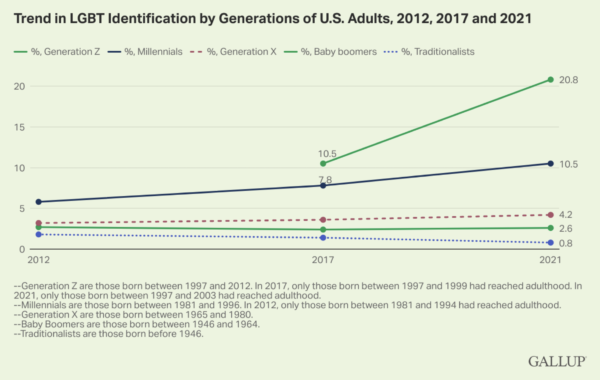
Working from GSS data and other data sets, Kaufman has produced a series of his own charts that delve deeper into the matter.
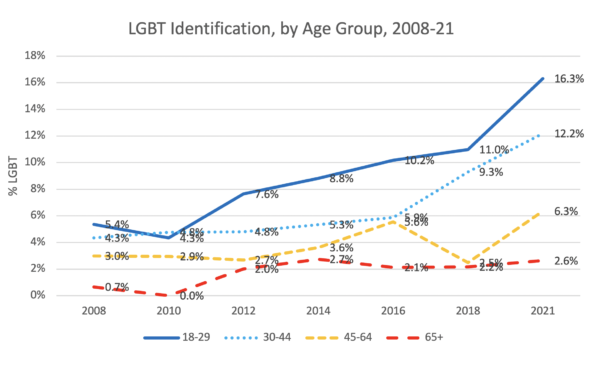

Guess which ideology tends to see the most people identifying as transgender?
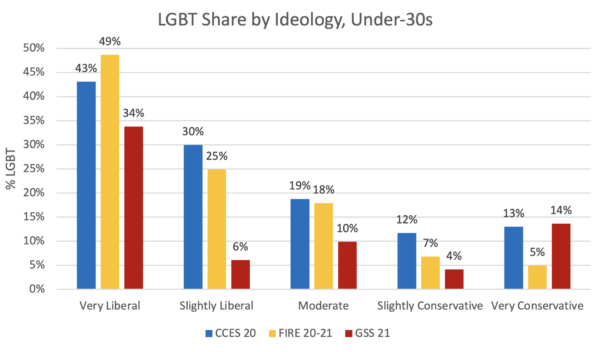

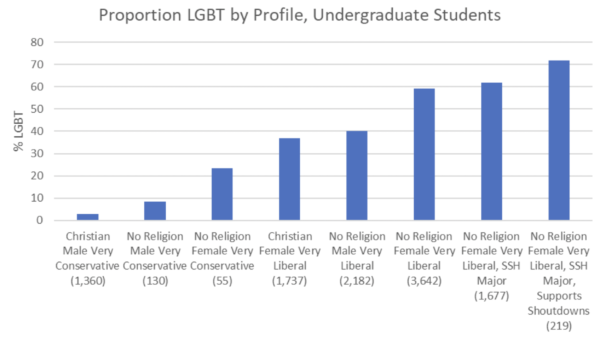
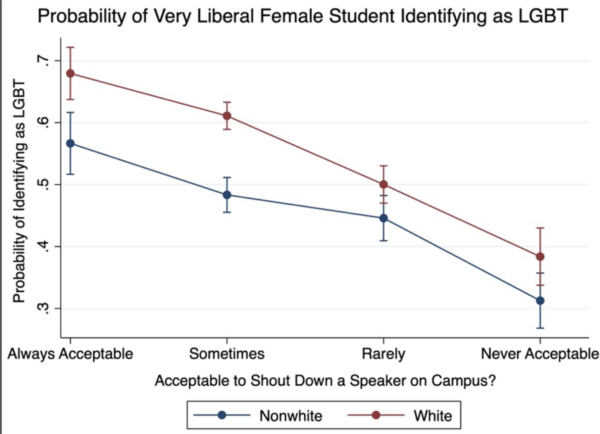
From the study:
- College students majoring in the social sciences and humanities are about 10 points more LGBT than those in STEM. Meanwhile, 52% of students taking highly political majors such as race or gender studies identify as LGBT, compared to 25% among students overall.
Big surprise there.
Here are some of the other findings that are sure to drive the identitarians into a rage:
- Very liberal ideology and LGBT identification are associated with anxiety and depression in young people. Very liberal young Americans are twice as likely as others to experience these problems. 27% of young Americans with anxiety or depression were LGBT in 2021. This relationship appears to have strengthened since 2010.
- Among young people, mental health problems, liberal ideology, and LGBT identity are strongly correlated. Using factor analysis in two different studies shows that assuming one common variable between all three traits explains 40-50% of the variation.
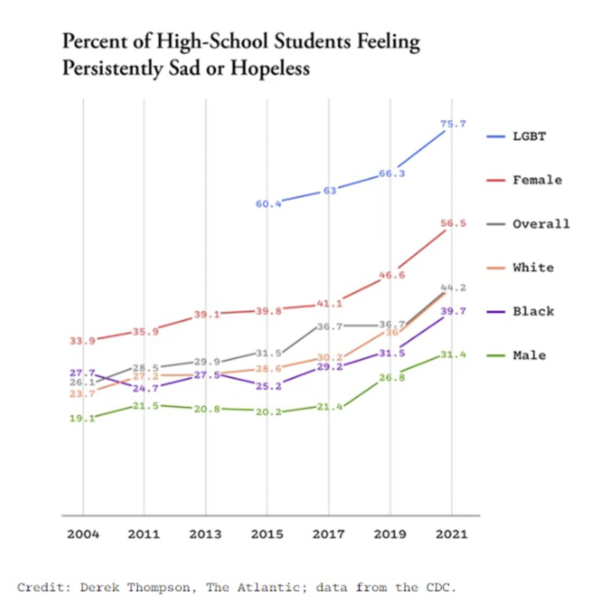

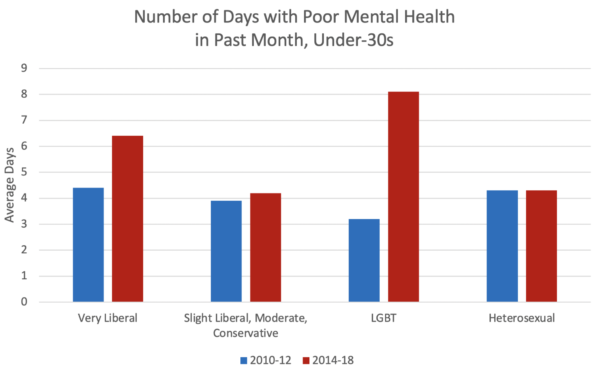

But maybe 2020 was the peak year for this trend? Kaufman again:
- Various data sources indicate that gender nonconformity – trans and non-binary identity – reached its peak in the last few years and has started to decline.
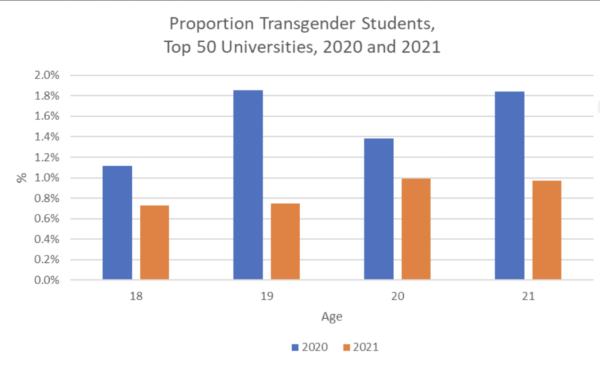
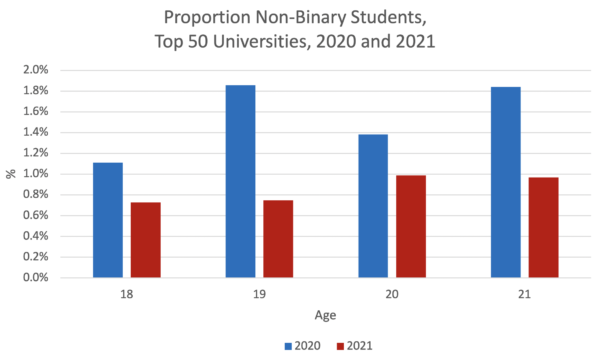
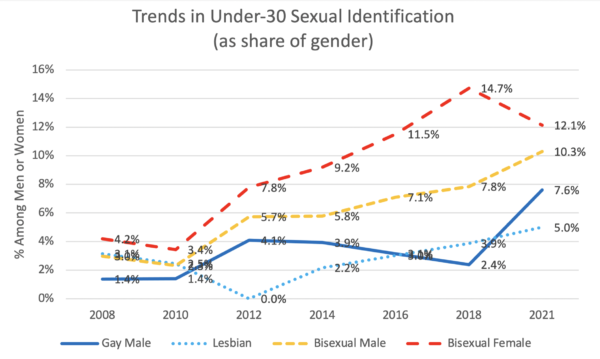
There’s also evidence that many women claiming transgender or bisexual identity are simply lying about it, which makes intuitive sense if this is partly a campus fad.
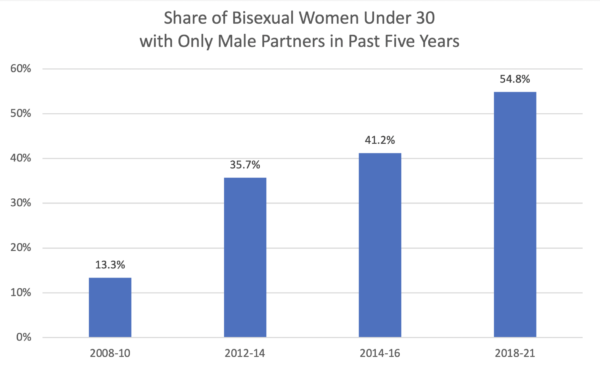
Much more in the full study, if you have the leisure time to take it in.
Notice: All comments are subject to moderation. Our comments are intended to be a forum for civil discourse bearing on the subject under discussion. Commenters who stray beyond the bounds of civility or employ what we deem gratuitous vulgarity in a comment — including, but not limited to, “s***,” “f***,” “a*******,” or one of their many variants — will be banned without further notice in the sole discretion of the site moderator.